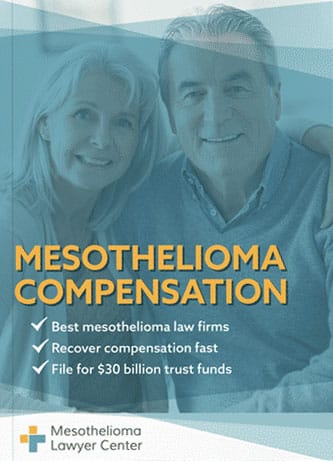The Role of OSHA in Protecting Workers from Asbestos Exposure: How Effective Are Regulations?

Asbestos exposure remains a significant workplace hazard in the U.S., with thousands of workers still at risk despite strict regulations. The Occupational Safety and Health Administration (OSHA) is responsible for enforcing asbestos safety standards, aiming to protect workers in industries like construction, shipbuilding, and manufacturing. However, gaps in enforcement and employer negligence continue to put lives at risk. If you’ve been exposed to asbestos on the job, seeking help from an asbestos law firm can be crucial in securing compensation and justice.
OSHA and Its Role in Asbestos Regulation
OSHA was established in 1970 to enforce workplace safety standards, including protections against asbestos exposure. Over the decades, it has introduced strict guidelines to limit asbestos exposure, requiring employers to monitor air quality, provide protective equipment, and train workers on asbestos hazards.
Historically, OSHA’s asbestos regulations evolved in response to mounting evidence linking asbestos to mesothelioma, lung cancer, and other deadly diseases. Regulations were strengthened in the 1980s and 1990s, setting permissible exposure limits (PEL) and mandating employer responsibilities. Despite these efforts, cases of workplace asbestos exposure persist, often due to weak enforcement and corporate negligence.
Current OSHA Asbestos Regulations and Workplace Standards

OSHA enforces asbestos standards in high-risk industries, including construction, shipbuilding, manufacturing, and auto repair, where workers face exposure from older buildings, ship insulation, industrial materials, and vehicle parts.
Key safety standards include:
- Permissible Exposure Limit (PEL): No more than 0.1 fiber per cubic centimeter over an 8-hour shift.
- Exposure Monitoring: Employers must regularly test air quality.
- Training & Protective Gear: Workers must receive asbestos safety training and proper protective equipment.
Despite these regulations, inconsistent enforcement continues to leave workers at risk.
How Effective Are OSHA’s Asbestos Regulations?
Despite OSHA’s regulations, asbestos-related diseases continue to emerge, often decades after exposure. Loopholes and lax enforcement leave workers at risk, as seen in:
- New York construction sites, where contractors ignore asbestos removal rules.
- Virginia shipyards, where workers still develop mesothelioma despite safety measures.
- California auto shops, where asbestos-containing brake pads remain in use.
Key enforcement challenges include employer noncompliance, limited OSHA inspections, and lack of worker awareness. Stronger enforcement and legal action are crucial to holding negligent companies accountable.
Industries and Jobs Still at Risk for Asbestos Exposure
Despite the U.S. banning most asbestos products, millions of workers remain at risk, especially in industries tied to older infrastructure:
- Construction: Renovations expose workers to asbestos in old buildings.
- Shipyards: Older ships still contain asbestos insulation.
- Manufacturing: Industrial workers handle asbestos in heat-resistant materials and auto parts.
- First Responders: Firefighters and emergency crews risk inhaling asbestos in collapsing structures.
Aging buildings in cities like Boston, Chicago, and Philadelphia further increase workplace exposure risks, highlighting the need for stricter safety enforcement.
Legal Options for Workers Exposed to Asbestos

If you or a loved one has been exposed to asbestos due to OSHA violations or employer negligence, legal action may be your best course of action.
How Violations Strengthen Mesothelioma Lawsuits
If an employer violated asbestos laws and regulations and workers developed mesothelioma, this strengthens their legal claim. Attorneys use OSHA records, workplace safety reports, and employee testimonies to build strong cases.
Compensation Through Asbestos Trust Funds
Many asbestos companies have gone bankrupt but set up trust funds to compensate victims. An experienced asbestos law firm can help workers file claims against these multi-billion-dollar trust funds.
The Role of Mesothelioma Lawyers
A mesothelioma lawyer helps workers and families:
- File lawsuits against negligent employers
- Secure settlements from asbestos manufacturers
- Claim benefits from asbestos trust funds
- Navigate complex legal procedures
For those affected, legal action can provide financial relief for medical bills, lost wages, and pain and suffering.
Protecting Your Rights After Asbestos Exposure
At Mesothelioma Lawyer Center, we’ve seen firsthand how OSHA’s asbestos regulations have helped reduce workplace exposure. However, enforcement challenges still leave too many workers vulnerable. Industries like construction, shipbuilding, and manufacturing continue to report asbestos-related illnesses, showing that worker protection gaps remain.
If you or a loved one has been exposed to asbestos, we are here to help. Our team connects victims with top mesothelioma lawyers who fight for justice. Whether it’s filing a claim against a negligent employer or seeking compensation from asbestos trust funds, we’ll guide you every step of the way. Don’t wait—protect your rights and your future with us today.
Legal Disclaimer
The information provided is for educational and informational purposes only. The information on this website is not intended as legal advice and should not be used as a substitute for consulting a licensed attorney. Legal outcomes and laws can vary by jurisdiction, and only a qualified lawyer can provide guidance tailored to your situation.


FREE Financial Compensation Packet
- Info on law firms that will recover your HIGHEST COMPENSATION
- Learn how to get paid in 90 days
- File for your share of $30 billion in trust funds

